The Ultimate Guide to Maintaining and caring for your robot vacuum
Maintaining and Caring for Your Robot Vacuum is crucial for its optimal performance and longevity. In “The Ultimate Guide to Maintaining and Caring for Your Robot Vacuum,” we delve into essential strategies and tips to ensure your device remains efficient and durable. From routine cleaning schedules to troubleshooting common issues, this comprehensive guide covers every aspect of robot vacuum maintenance. Learn how to properly clean brushes, filters, and sensors to prevent clogs and malfunctions. Discover the significance of regular inspections and software updates to keep your vacuum running smoothly. Whether you’re a new owner or a seasoned user, this guide equips you with the knowledge and techniques needed to maximize the lifespan and effectiveness of your robot vacuum.
Maintaining and caring for your robot vacuum is essential for its longevity and performance. Regular cleaning and upkeep can ensure that your robot vacuum continues to clean your home and maintain optimal suction power effectively. This guide will discuss various ways to care for your robot vacuum, including tips for cleaning and maintaining the brushes, filters, and sensors and troubleshooting common issues. Following these tips, you can keep your robot vacuum running smoothly and ensure a long lifespan.
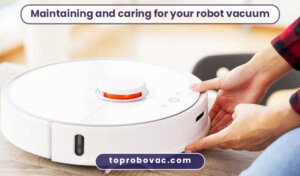
Cleaning and Maintaining the Brushes
Regularly cleaning and maintaining the brushes ensure that your robot vacuum continues to clean your floors and maintain optimal suction power effectively.
Importance of brushes in cleaning performance
The brushes on a robot vacuum play a crucial role in its cleaning performance. They are responsible for agitating and lifting dirt and debris from the floor.
Steps to remove brushes from the robot vacuum
To clean the brushes, first, you will need to remove them from the robot vacuum. After this, use scissors or a brush cleaner to remove any tangled hair or debris. You can also use a damp cloth to wipe down the brushes.
Keep brushes free of debris and tangles
Maintaining the brushes is essential to keep them free of debris and tangles. You should also check the brushes for wear and tear, such as frayed or broken bristles.
Keep brushes properly aligned
Additionally, it is essential to keep the brushes adequately aligned. If the brushes are not in the correct position, it can affect the vacuum’s cleaning performance. Make sure the meetings are correctly aligned and securely attached to the void.
Cleaning and Maintaining the Filters
Regularly cleaning and maintaining the filters can ensure that your robot vacuum effectively captures dust and debris and keeps the air quality inside your home.
Importance of filters
The filters on a robot vacuum play a crucial role in capturing dust and debris, keeping the air inside your home clean. It’s essential to clean or replace the filters regularly to ensure that the robot vacuum captures dust and debris effectively.
Cleaning the filters
To clean the filter, you will need to remove it from the robot vacuum. After this, use a small brush or a can of compressed air to remove any debris. If the filter is washable, you can wash it with mild detergent and warm water and allow it to dry completely before putting it back.
Maintaining the filters
Maintaining the filters is also essential to ensure they are correctly installed. Ensure the filters are securely in place and properly sealed to prevent dust and debris from bypassing the filter.
Additionally, it is essential to be mindful of the environment in which you’re using the robot vacuum. If you have pets or live in an area with dust, you may need to clean or replace the filters more frequently.
Cleaning and Maintaining the Sensors
Regularly cleaning and maintaining the sensors can ensure that your robot vacuum continues to navigate and perform optimally, avoiding obstacles and keeping your home clean.
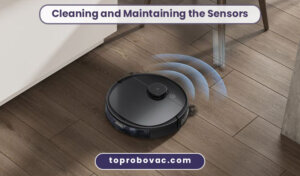
Role of sensors in robot vacuum’s navigation and performance
Sensors play an essential role in the navigation and implementation of a robot vacuum. They help the robot vacuum navigate around obstacles and furniture and also allow it to avoid falling down stairs or getting stuck.
Common types of sensors found on a robot vacuum include cliff sensors, bumper sensors, and lidar sensors. Cliff sensors detect changes in floor level, bumper sensors detect obstacles, and lidar sensors use laser technology to map the environment.
Cleaning the sensors
To clean the sensors, use a dry, soft cloth to wipe away any dust or debris that may have accumulated. Be careful not to use any liquids or abrasive materials, as this can damage the sensors.
Maintaining the sensors
Maintaining the sensors is essential to ensure they are correctly aligned and not obstructed. Any objects blocking the sensors can affect their function and cause the robot vacuum to malfunction. Additionally, check the sensors regularly to ensure they are not damaged or malfunctioning.
Another tip for maintaining sensors is to keep the robot vacuum itself clean, as dust and debris can accumulate on the sensors and affect their performance.
Troubleshooting Common Issues
Despite regular maintenance, issues can still arise with a robot vacuum. Some of the most common problems include:
- The robot vacuum is not moving or is moving in circles
- The robot vacuum is not picking up dirt or debris
- The robot vacuum is getting stuck or stuck in a specific area
- The robot vacuum is not charging or has a short battery life
To troubleshoot these issues, first, check the user manual for any specific troubleshooting instructions.
The robot vacuum is not moving or is moving in circles
If the robot vacuum is not moving or moving in circles, check to ensure it is not stuck on an obstacle or tangled in cords.
The robot vacuum is not picking up dirt or debris
If the robot vacuum is not picking up dirt or debris, ensure that the brushes and filters are clean and in good working condition. Also, check to ensure that the dustbin is not complete and the suction power is not blocked.
The robot vacuum is getting stuck or stuck in a specific area
If the robot vacuum gets stuck in a specific area, check to ensure it is not stuck on an obstacle or tangled in cords. Also, check the sensors to ensure they are not malfunctioning.
The robot vacuum is not charging or has a short battery life
If the robot vacuum is not charging or has a short battery life, check the charging dock and cable, and ensure they are correctly connected. Also, check the battery level, and if needed, replace the battery.
Following these troubleshooting tips, you can often quickly and efficiently resolve common issues with your robot vacuum and get it back to cleaning your home effectively.
Pros:
- Regular maintenance and care can help prolong the lifespan of a robot vacuum
- Keeping the vacuum’s filters clean can improve suction power and overall cleaning performance
- Emptying the dustbin and cleaning the brush roll and other brush parts can help prevent clogs and other issues
- Keeping the vacuum’s sensors and navigation systems clean can help it navigate better and avoid getting stuck
- Regularly scheduling cleaning can help keep your home cleaner and reduce the need for manual cleaning
Cons:
- Regular maintenance and care can be time-consuming and may require purchasing replacement parts
- If not done correctly, maintenance and care can damage the vacuum or void the manufacturer’s warranty
- Some robot vacuums are more challenging to maintain and care for than others, so it’s essential to do research and choose a model that is easy to maintain
Conclusion
Maintaining and caring for your robot vacuum is essential for its longevity and performance. Regularly cleaning and keeping the brushes, filters, and sensors ensure that your robot vacuum continues to clean your home and maintain optimal suction power effectively.
Additionally, it’s essential to troubleshoot and resolve any common issues that may arise with your robot vacuum. Following the tips outlined in this guide, you can keep your robot vacuum running smoothly and ensure a long lifespan.
Frequently Asked Questions
Q. How often should I clean the brushes on my robot vacuum?
At least once a month or more frequently if you have pets or heavy foot traffic in your home.
Q. How often should I replace the filters on my robot vacuum?
The replacement frequency will depend on the usage and the environment you’re using the robot vacuum; check the filter every month or two and replace it if it looks dirty or clogged.
Q. My robot vacuum is not moving or is moving in circles; what can I do?
First, check to ensure it is not stuck on an obstacle or tangled in cords. Refer to the user manual for further troubleshooting instructions.
Q. My robot vacuum is not picking up dirt or debris; what can I do?
Ensure the brushes and filters are clean and in good working condition. Also, check to ensure that the dustbin is not complete and the suction power is not blocked. If the issue persists, refer to the user manual for further troubleshooting instructions.
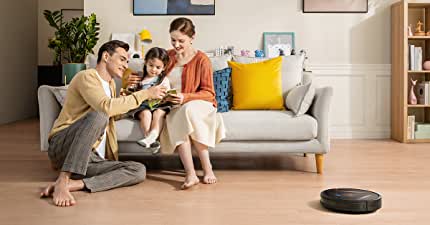
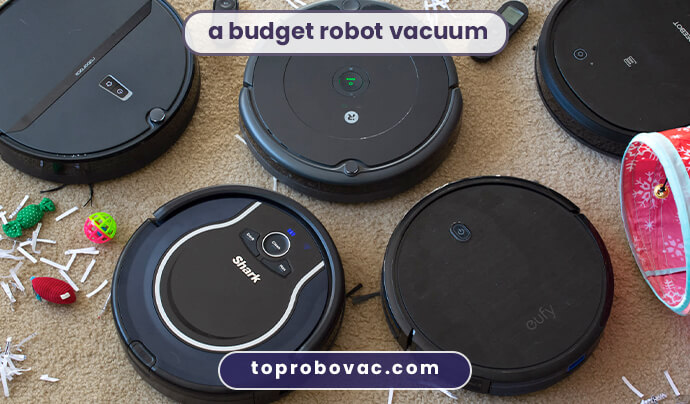
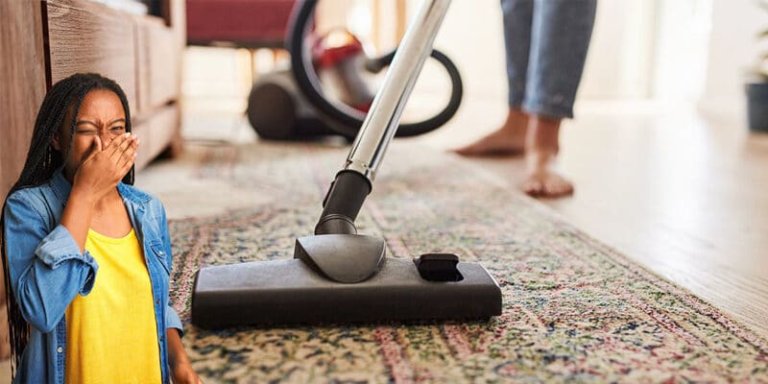
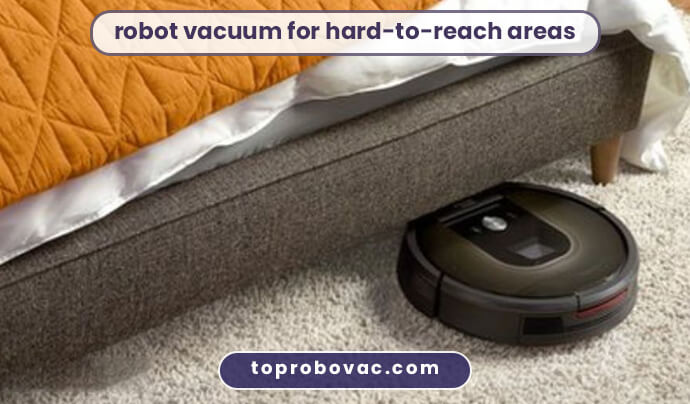
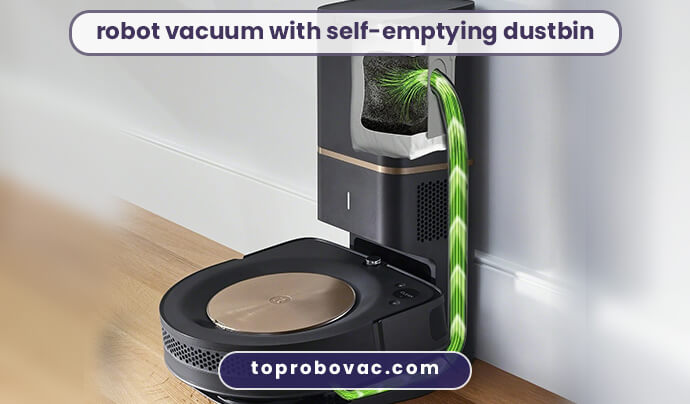
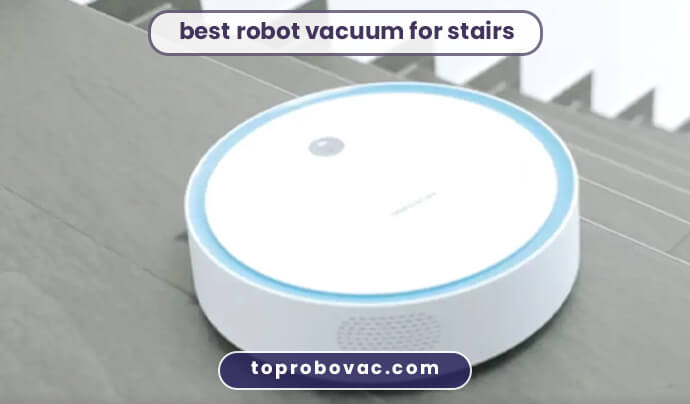
Itís nearly impossible to find knowledgeable people on this subject, but you seem like you know what youíre talking about! Thanks